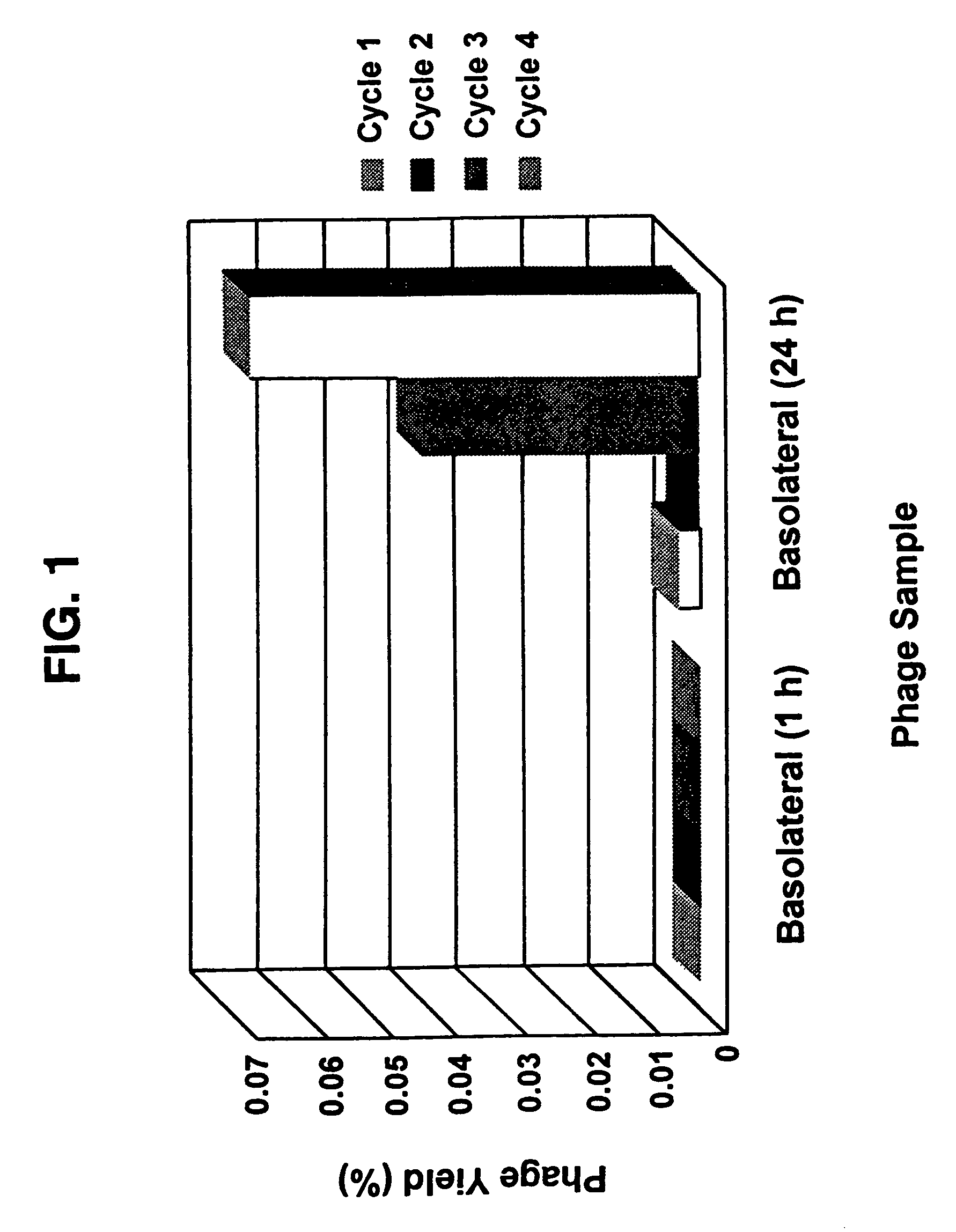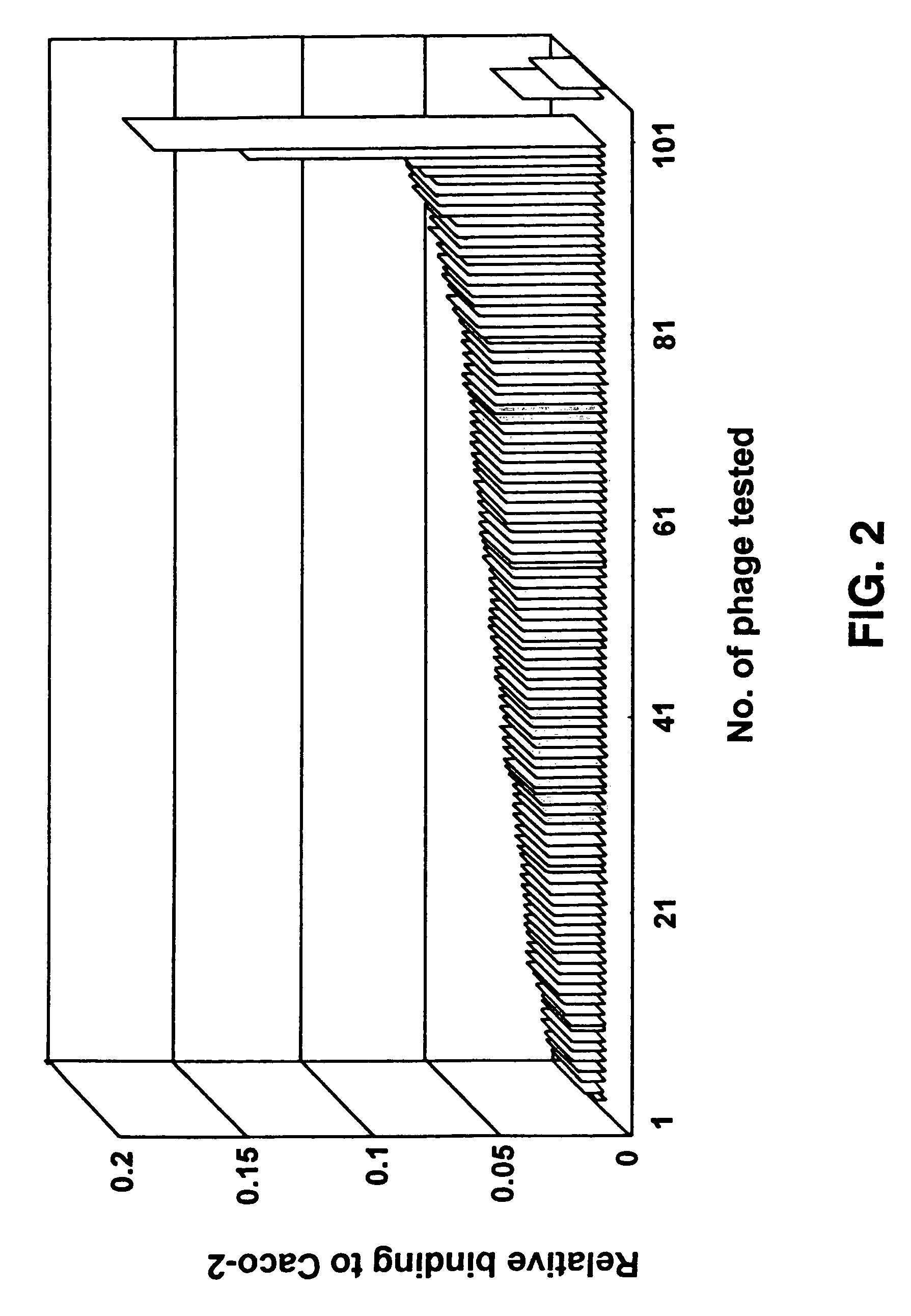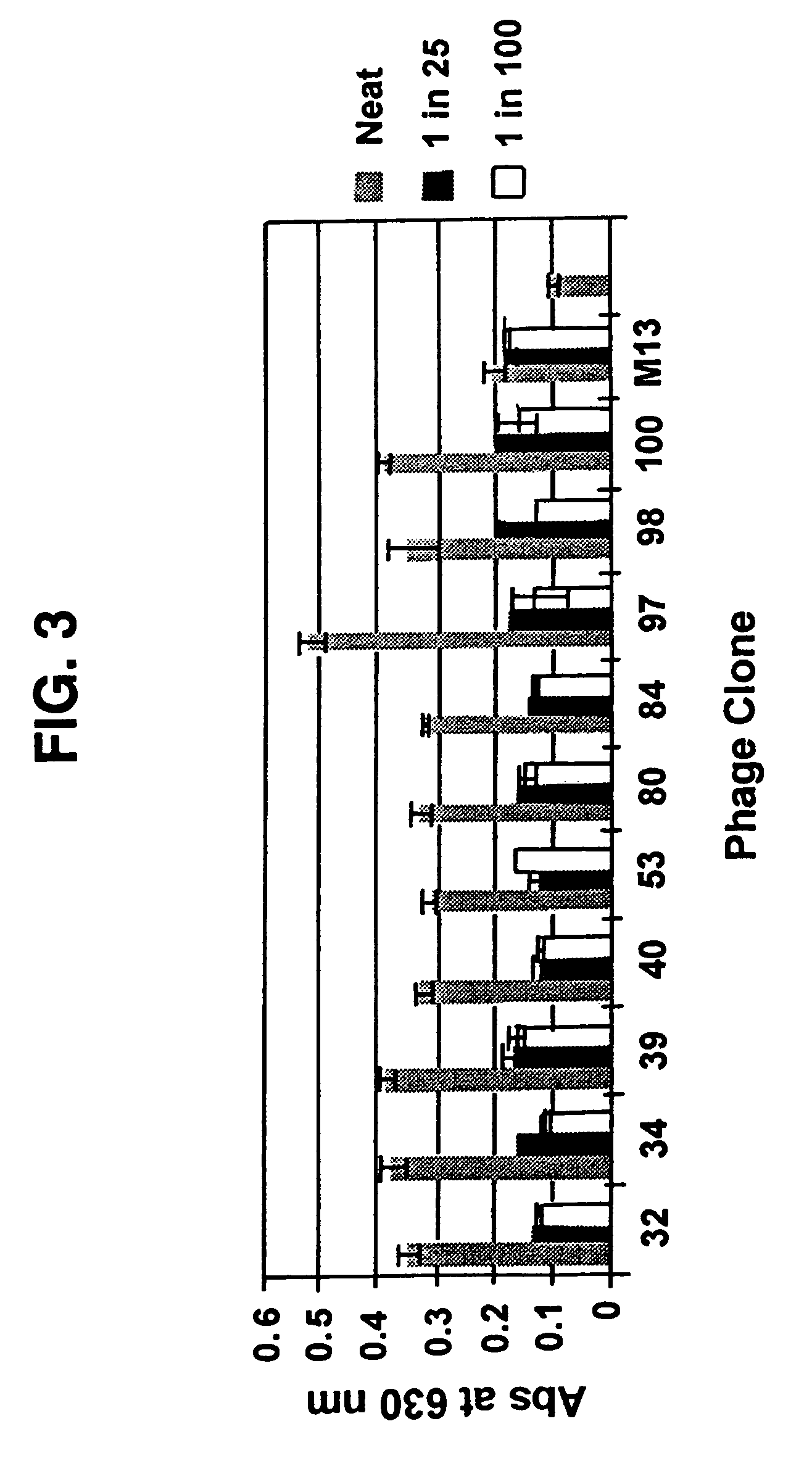Peptides which enhance transport across tissues and methods of identifying and using the same
a technology of peptides and tissues, applied in the field of identification of peptide sequences, can solve the problems of not being able to determine, or not being the most effective way to determine, and not providing information regarding sequences whose, and the technique does not assess the ability of the disclosed di- and tri-peptides to enhance the delivery of drugs, so as to facilitate the transport of active agents, facilitate the transport, facilitate the effect of transpor
- Summary
- Abstract
- Description
- Claims
- Application Information
AI Technical Summary
Benefits of technology
Problems solved by technology
Method used
Image
Examples
example 1
% Yield of φ in Caco-2 Cells
[0068]Libraries L3.6, L3.15, L8.15 and fUSE2 (control) were screened using Caco-2 cells according to the procedures given above. The percentage yields per cycle (1 hr, 5 hr, 24 hr and total yield) and the change in transepithelial resistance for the cycles were measured. The TER measurements for the Caco-2 cells remained in the range 224-449 Ωcm−2. The phage yield on the basolateral side of the cell culture is reported as a percentage of the phage applied to the apical side. Six successive screening cycles were performed and 1 hr, 5 hr and 24 hr samples of the basolateral buffer were harvested. The percentage yields of phage obtained per cycle in cycles 1-6 are summarized in Table 1. Usable yields were generally obtained by the 4th cycle.
example 2
% Yield of φ in T-84 Cells
[0069]Libraries L3.6, L3.15, L8.15 and fUSE2 (control) were screened using T-84 cells according to the procedures given above. The percentage yields per cycle (1 hr, 5 hr, 24 hr and total yield) and the change in transepithelial resistance for the cycles were measured. The TER measurements for the T-84 cells remained in the range 224-449 Ωcm−2. The phage yield on the basolateral side of the cell culture is reported as a percentage of the phage applied to the apical side. Four successive screening cycles were performed and 1 hr, 5 hr and 24 hr samples of the basolateral buffer were harvested. The percentage yields of phage obtained per cycle in cycles 14 are summarized in Table 2. Usable yields were generally obtained by the 4th cycle.
example 3
% Yield of φ in Isolated Colon Segments
[0070]A phage mixture comprising libraries L3.6, L3.15 and L8.15 was screened using isolated rat colon according to the procedures given above. The phage yield on the basolateral side of the tissue sample is reported as a percentage of the phage applied to the apical side. Six successive screening cycles were performed and four 1 h samples of the basolateral buffer were harvested. Table 3 reports the % yield of φ in isolated colon segments.
[0071]
TABLE 1% YIELD 0F φ IN CACO-2 CELLSTime (hours)Round1524TotalLibrary L3.61 9 × 10−1 9 × 10−1 9 × 10−10.00272 5 × 10−40.0160.0770.093531.56 × 10−50.06250.140.20240.1320.440.03360.605651.64 × 10−40.0691.3771.4563.88 × 10−35.93 × 10−4 3.04 × 10−30.0075Library 3.151 9.5 × 10−1 9.5 × 10−4 9.5 × 10−40.002852 5 × 10−4201030.03 2.5 × 10−51.35 × 10−31515.040.2070.0480.821.0755 2 × 10−40.212.8753.0961.17 × 10−519.26.425.6Library L8.1510.020.020.020.022 5 × 10−40.50.0180.51853 1.4 × 10−30.0771.571.648442.8...
PUM
| Property | Measurement | Unit |
|---|---|---|
| Volume | aaaaa | aaaaa |
| Volume | aaaaa | aaaaa |
| Volume | aaaaa | aaaaa |
Abstract
Description
Claims
Application Information
 Login to View More
Login to View More - R&D
- Intellectual Property
- Life Sciences
- Materials
- Tech Scout
- Unparalleled Data Quality
- Higher Quality Content
- 60% Fewer Hallucinations
Browse by: Latest US Patents, China's latest patents, Technical Efficacy Thesaurus, Application Domain, Technology Topic, Popular Technical Reports.
© 2025 PatSnap. All rights reserved.Legal|Privacy policy|Modern Slavery Act Transparency Statement|Sitemap|About US| Contact US: help@patsnap.com



